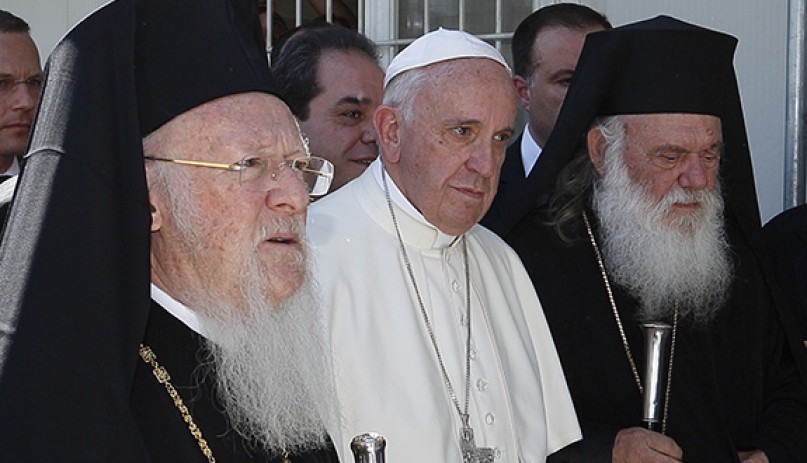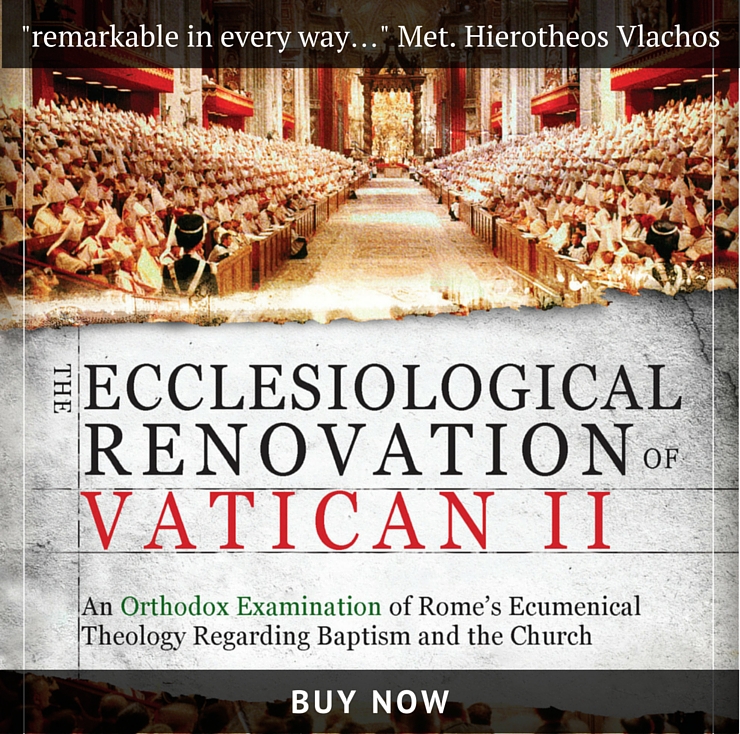Note the author's excitement about the possibility that the Great and Holy Council will follow Vatican II ecclesiology. Indeed, he invokes the very same passage from Lumen Gentium which I cited in my recent lecture, "From the Second Vatican Council to the Pan Orthodox Council."
In particular I said:
The most famous of such contested phrases from the Second Vatican Council is found in the dogmatic Constitution Lumen Gentium where a decisive change was made to the definition of the Church.
n order to be consistent with a new view of the separated churches, Lumen Gentium dropped an absolute and exclusive identity between the Church of Christ and the Roman Catholic Church, as had been traditionally asserted.[13] The preparatory commission to the council in its opening session of 1962 had made the following statements in the schema De Ecclesia: “The Roman Catholic Church is the Mystical Body of Christ ... and only the one that is Roman Catholic has the right to be called Church.”[14]
his simple identification of the Church of Christ with the Roman Catholic Church, which had also been repeatedly stated in papal encyclicals[15] ... was replaced with the statement that “the Church of Christ “subsists in” the Catholic Church.”[16]
ot long ago, fifty years after the council, the head of ecumenical relations at the Vatican, Cardinal Kasper, was forced to admit that “the interpretation of [subsists in] amounts to ‘Desideratum’ [something still desired] and includes amphoteric elements which accept twofold interpretations; it is at once inclusive and exclusive.”[17]
ence, it is not without reason, then, that many speak of a double standard and a duplicitous stance on the part of the authors of the Council’s texts. It cannot be an accident that the Second Vatican Council, especially in the texts of Lumen Gentium and Unitatis Redintegratio, is claimed as the source for both those who advance an “exclusive” ecclesiology and those who advance an “inclusive” ecclesiology. For, as a leading ecumenist professor in Thessaloniki has written, “they use the same sources, but come to entirely different conclusions.”[18]
Read my entire paper here - http://www.pravoslavie.ru/english/93786.htm - and then compare this with his comments below...



Please be kind, lest your comment go the way of Babylon.